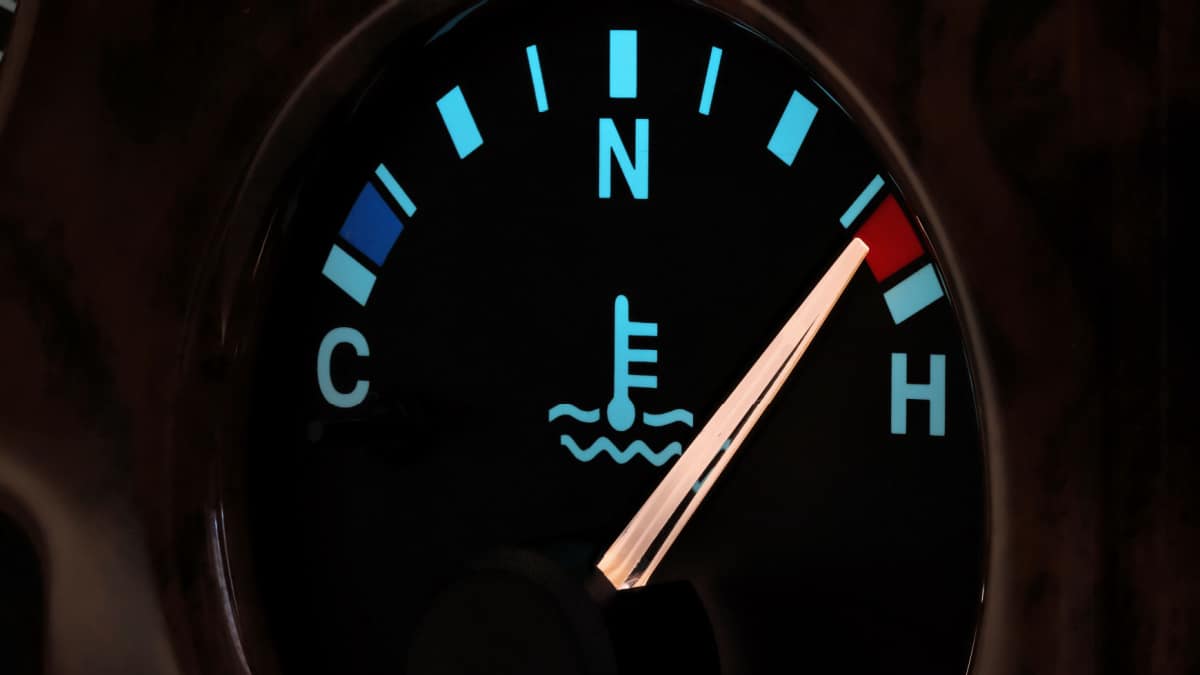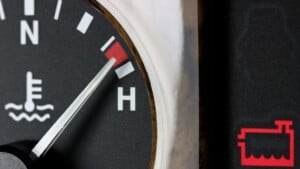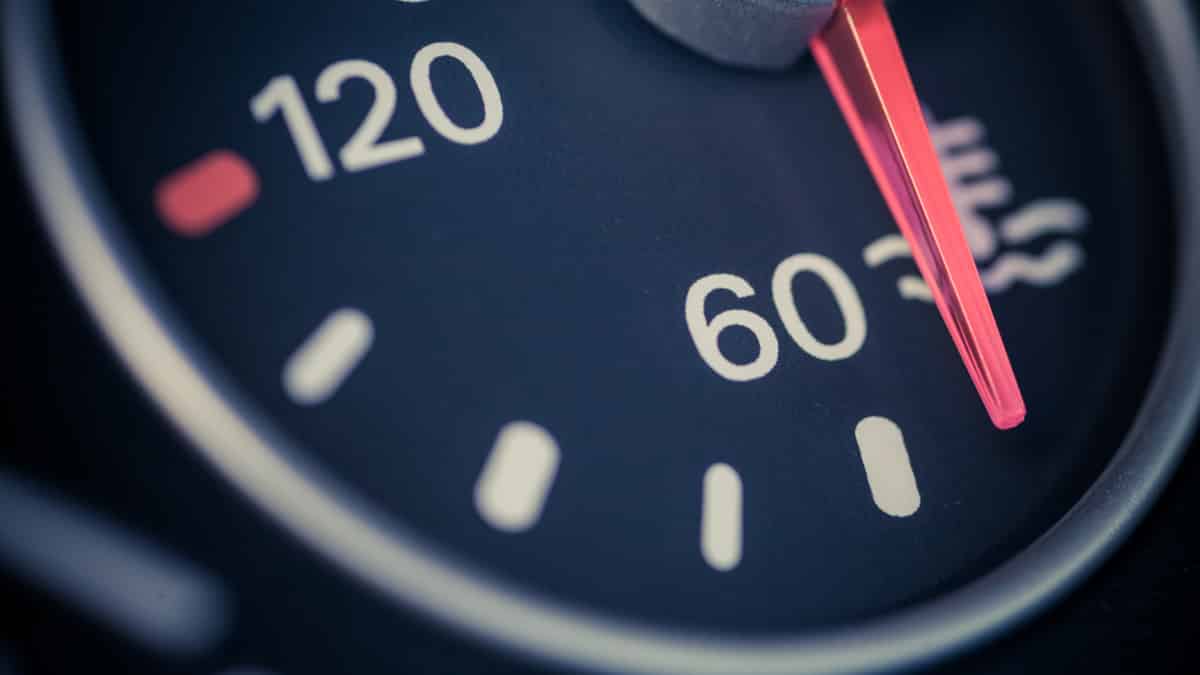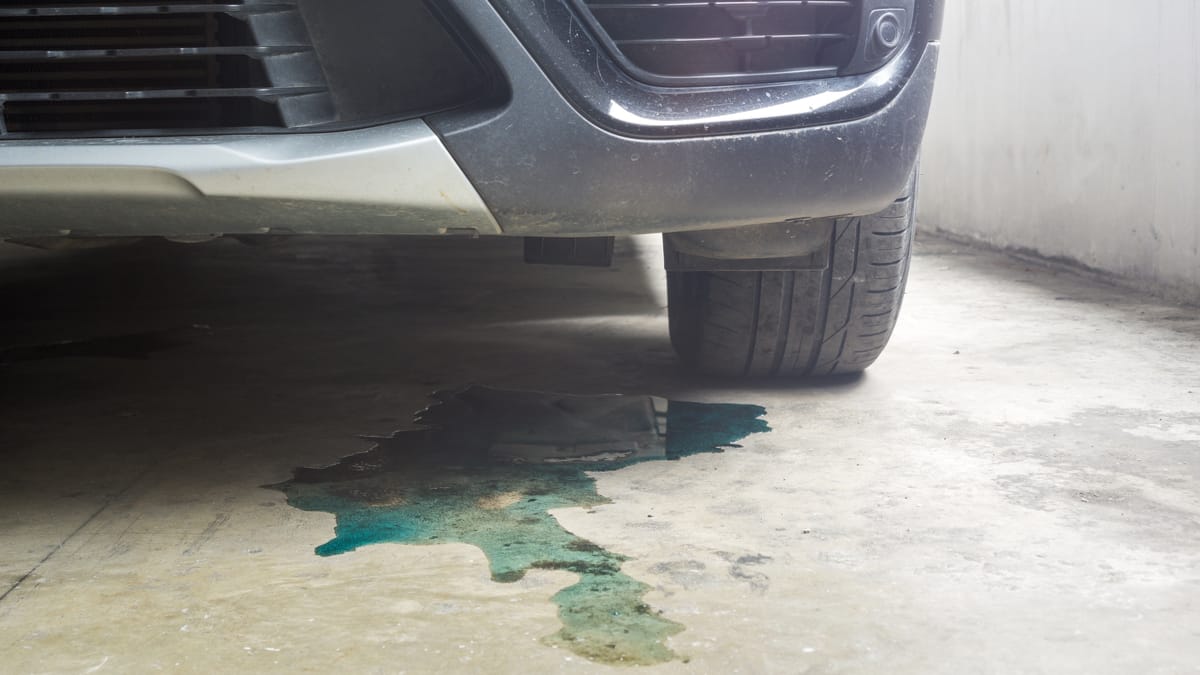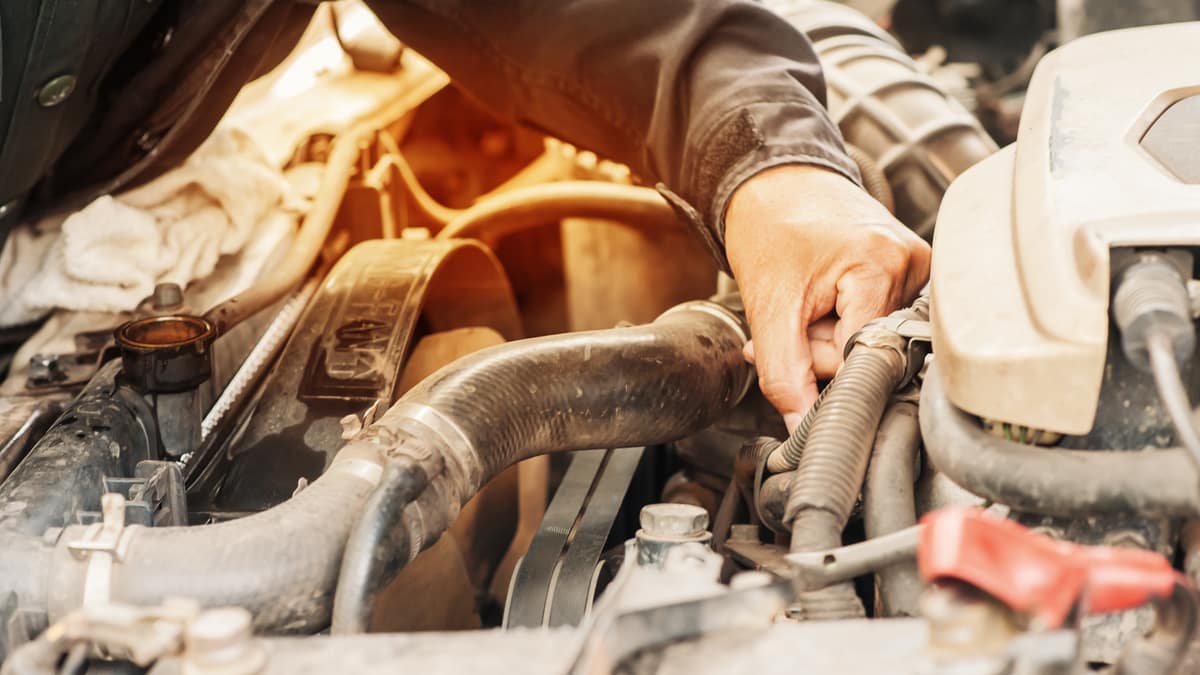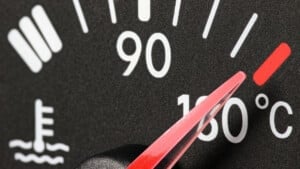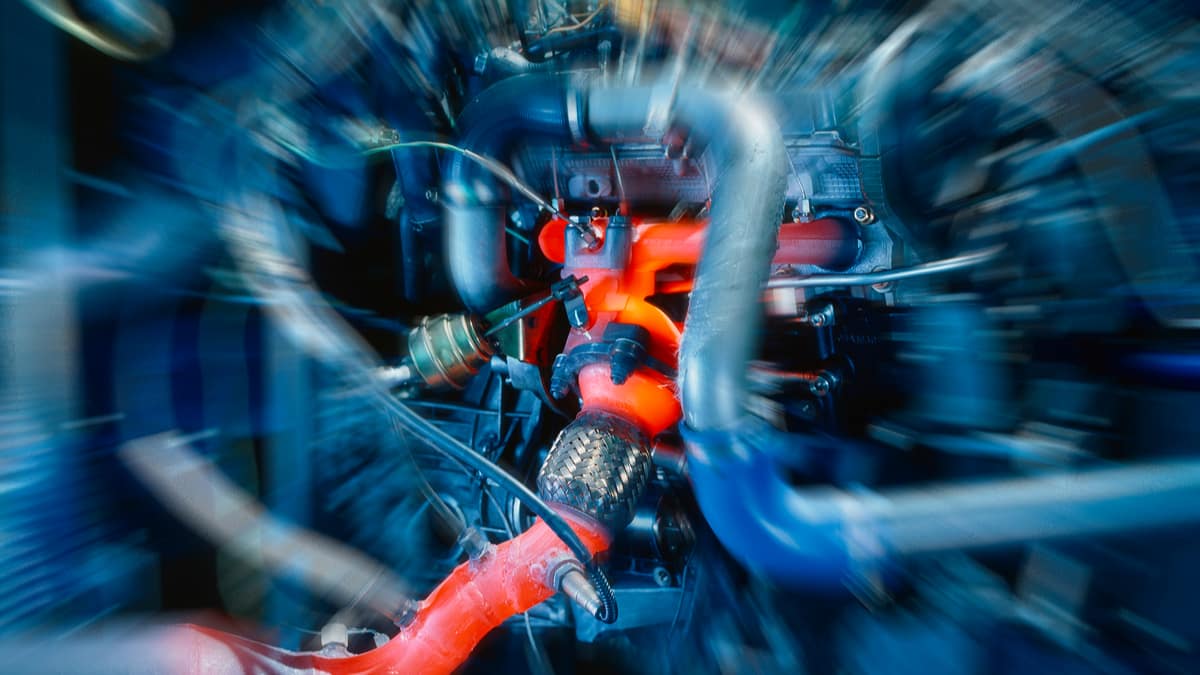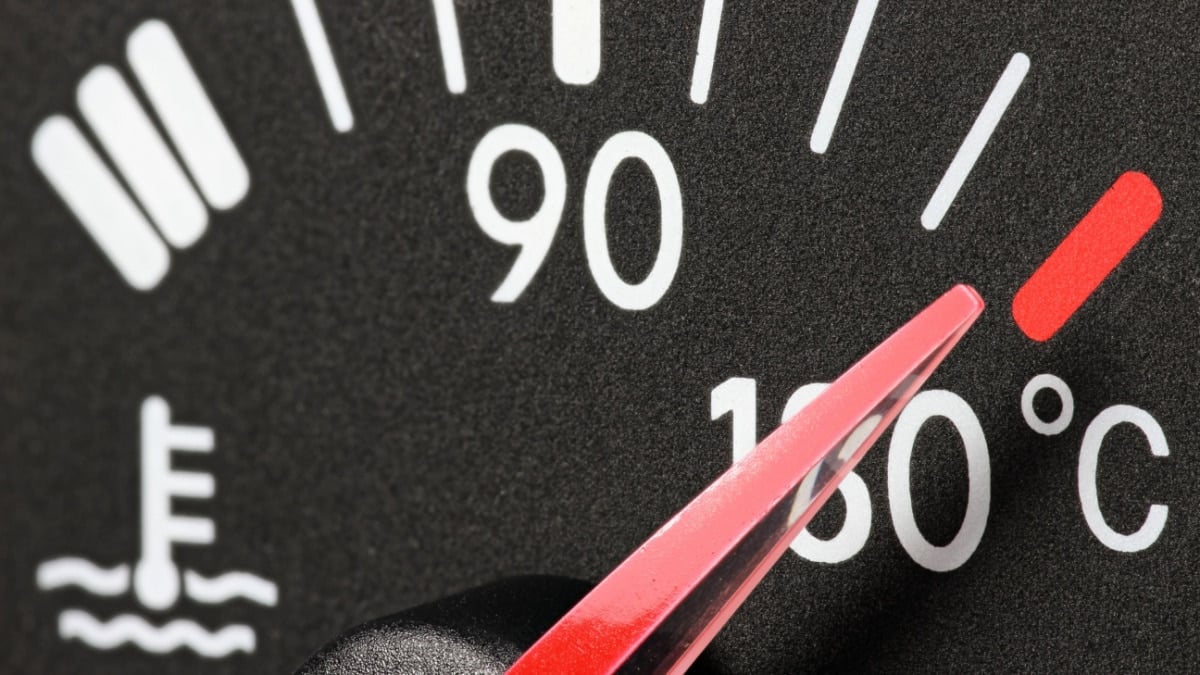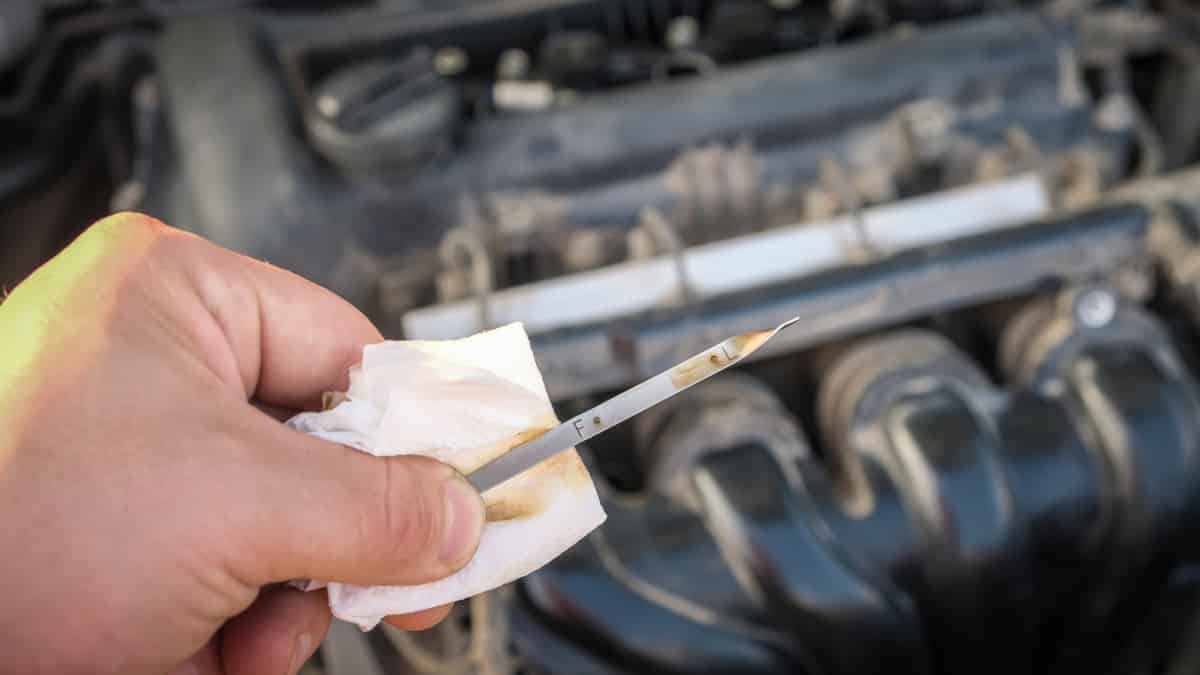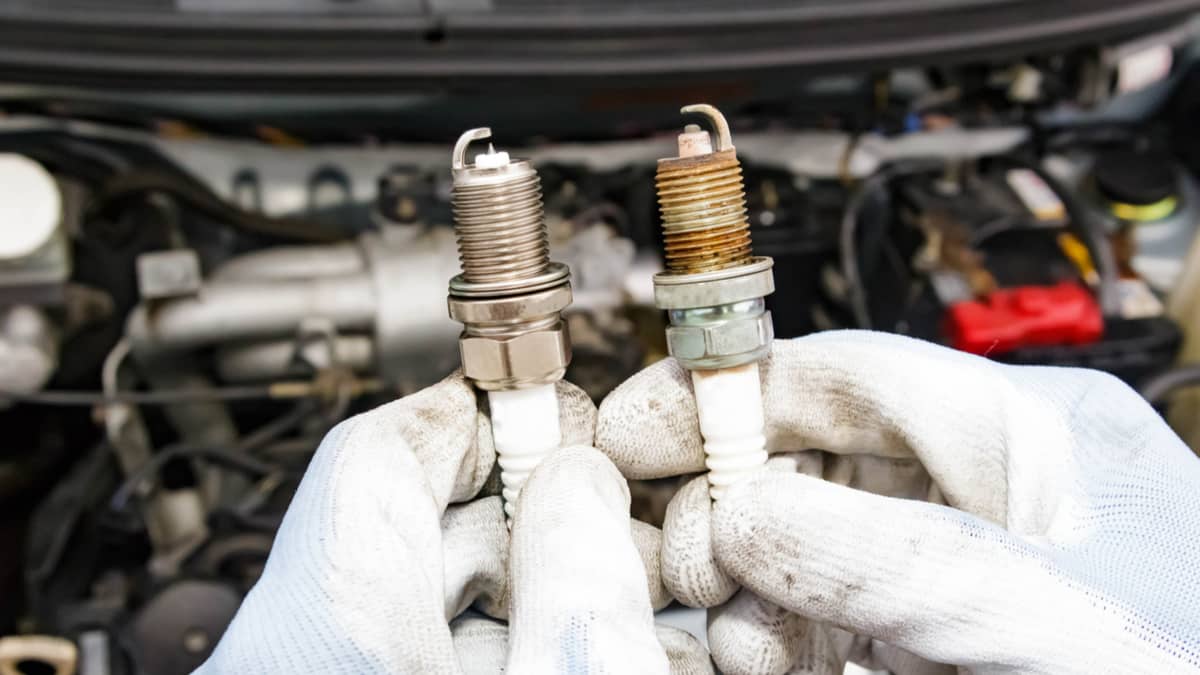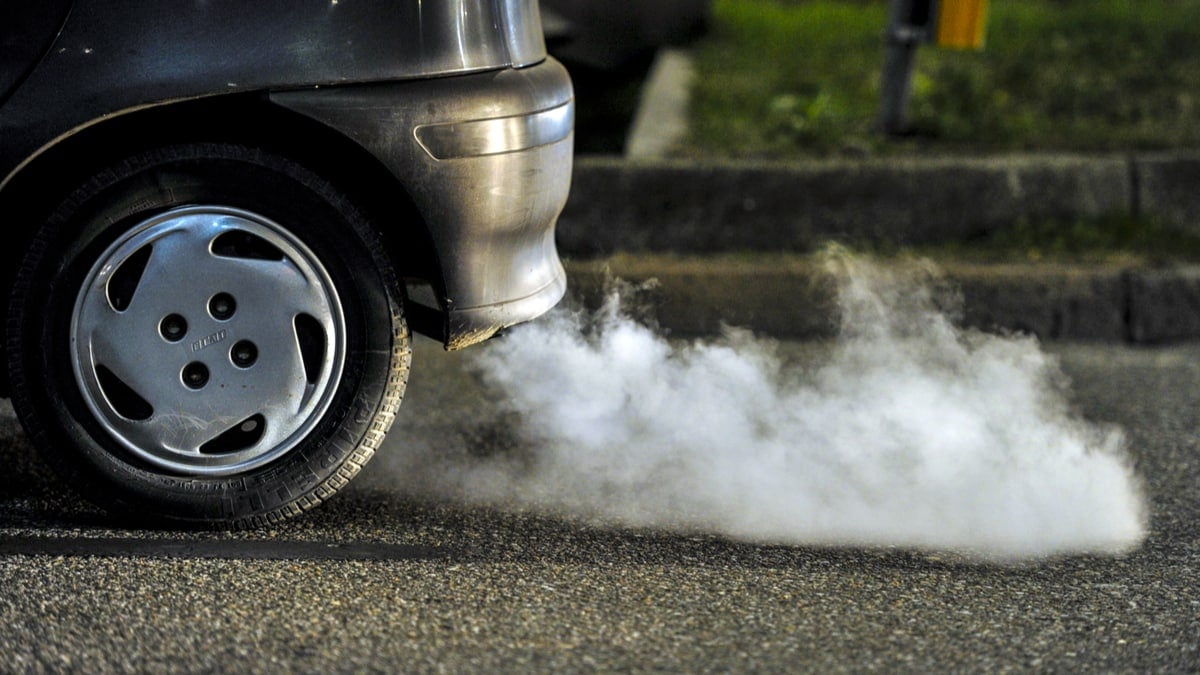When the car engine starts to run hot, you know it’s time to take immediate action. You don’t want the car to overheat. So, what does it mean when the car is running hot but not overheating? There are a lot of issues that can cause this problem, all of which should be dealt with right away.
In this guide, we cover the top reasons the car is hot. We also show you what to do next to avoid engine damage. Finally, at the end of this article, we answer your top engine temperature questions.
Reasons Your Car Is Running Hot But Not Overheating
Many of the same reasons the car runs hot and overheats will still apply. These include a bad thermostat, a clogged or defective radiator, a faulty coolant temperature sensor, a bad water pump, low coolant, air in the cooling system, a malfunctioning temperature gauge or a worn-out engine.
Let’s take a look at these to figure out what’s going on with your car.
1. Bad Thermostat
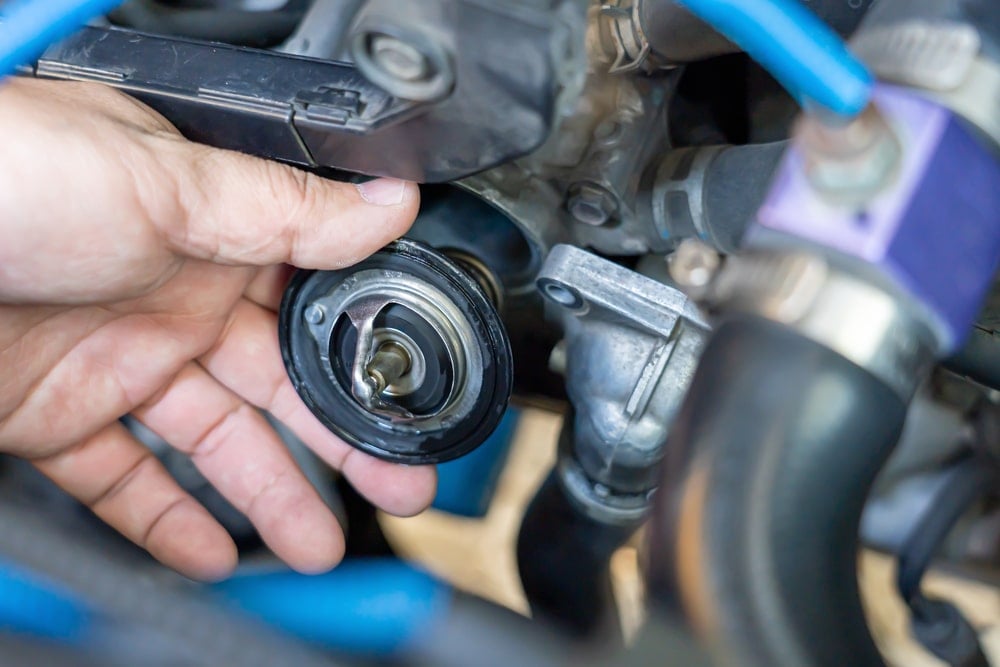
A main component of the cooling system is the engine coolant thermostat. This part is the gateway of the system, controlling the flow of coolant when the engine gets hot. If the engine is cold, the thermostat closes to keep the coolant from flowing. Once it gets hot, the thermostat opens for coolant to flow freely.
Over time, the thermostat gets worn out and it can’t accurately measure the temperature. When this happens, it could open too late, allowing the engine to get hotter than it should. If the thermostat hasn’t completely failed yet, the engine might not overheat, but it could only be a matter of time.
2. Clogged or Bad Radiator

The car radiator transfers heat away from the engine through a series of tubes. When hot coolant comes out of the engine, it circulates through the radiator to cool down.
If a clog occurs or the radiator fails, the engine will get hotter. You may also notice coolant leaking or the color of the fluid could start to change.
RELATED: 5 Symptoms Of A Bad or Clogged Radiator
3. Faulty Coolant Temperature Sensor
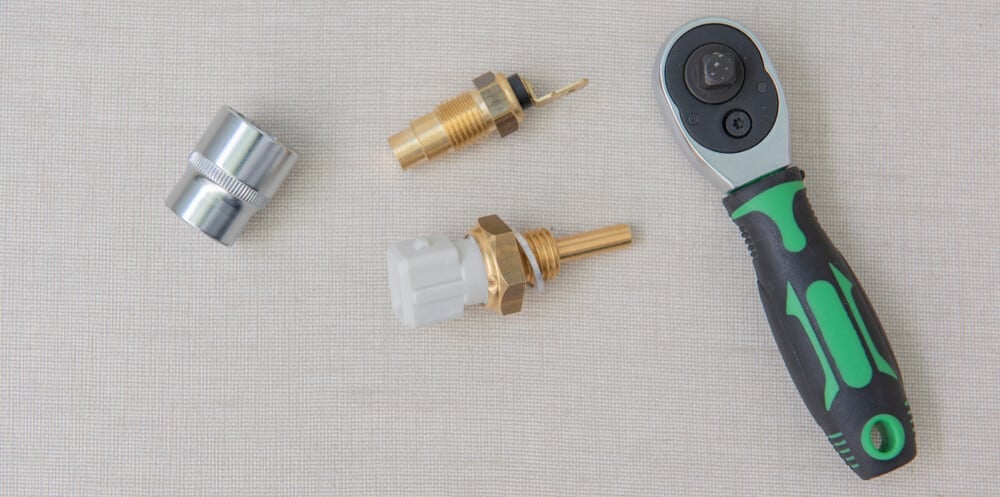
The coolant temperature sensor monitors how hot the liquid becomes. This measurement helps determine the air-fuel ratio since cooler engines require more fuel.
When this sensor fails, the engine normally runs rich and it can also run too hot. You may also have a rougher idle or see black smoke coming from the exhaust. Furthermore, if the coolant temperature sensor runs the auxiliary fan in your car, it can fail, also leading to a hot engine.
RELATED: 8 Symptoms Of A Bad Coolant Temp Sensor
4. Bad Water Pump
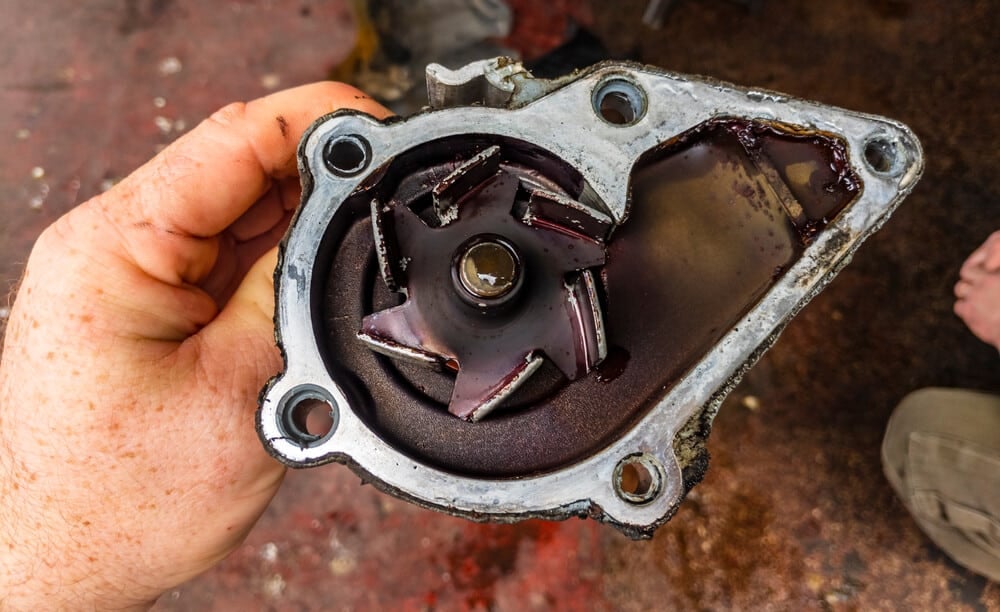
The water pump is responsible for moving coolant from the radiator to the engine. Over time, the water pump will fail, normally giving warning signs first.
When it stops operating efficiently, the engine tends to run on the hotter side. You may also see some coolant leaking from the pump or it could start to make a strange noise as it fails.
5. Low Coolant
Your car must have the right amount of coolant for the engine to remain at the proper temperature. Engine coolant is a mixture of antifreeze and water. The antifreeze increases the boiling point of the water and keeps it from freezing when it’s cold. It also contains rust inhibitors to protect the engine.
The ideal car temperature is between 195 and 220 degrees. When the coolant is too weak or there’s not enough, the heat won’t be absorbed properly as the liquid goes through the engine. You are then left with a hot motor.
6. Air in the Cooling System
In relation to the last problem, low coolant levels can also lead to air in the cooling system. It can also happen because of a blown head gasket or after a flush that wasn’t performed correctly.
Either way, with air in the system, the coolant can’t flow properly and reduce the heat. It can also cause an airlock in the radiator.
7. Bad Temperature Gauge
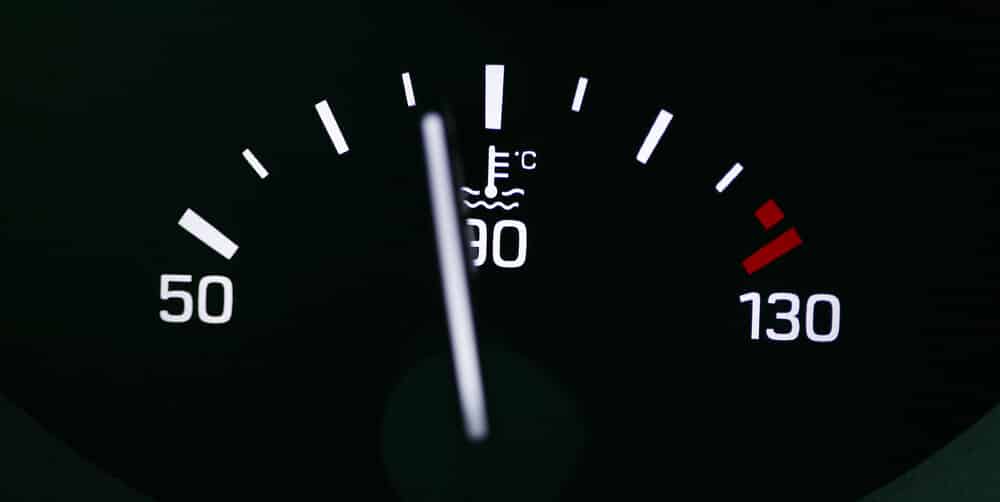
Temperature gauges are reliable but also electronic, so they can fail. When the gauge itself is failing, it may start to act erratically.
You may see the gauge jump up and down. The issue could also be a bad connection or defective wiring to the gauge, both of which should be inspected.
8. Overworked Engine
It’s possible that you are simply pushing the car too hard. If you are towing a heavy load, climbing a mountain or have packed the vehicle full of heavy cargo, you might be asking too much from it.
You can also cause the car to run warm if it’s hot outside and you are sitting in traffic with the air conditioning on. Without the airflow through the radiator, the coolant can stay warmer than usual.
How To Fix A Car That’s Running Hot But Not Overheating
If you notice the temperature gauge going up but the engine hasn’t started to overheat, your quick action can prevent problems. Here’s what we would do as professional mechanics.
1. Read Trouble Codes
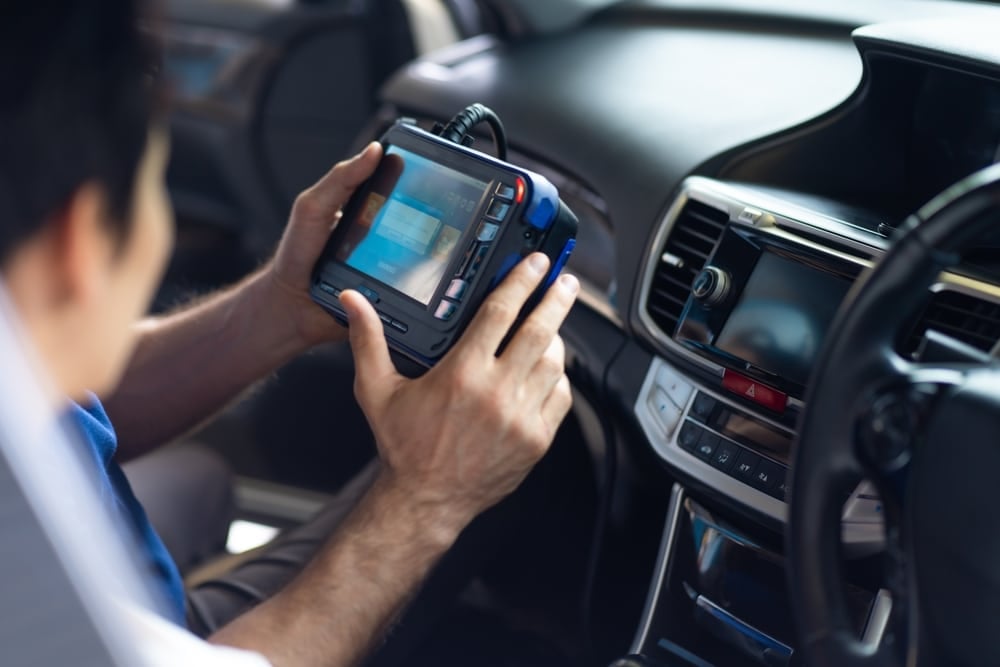
Every modern vehicle comes equipped with a diagnostic trouble code system that tells you when something is wrong. At the first sign of trouble with anything electronic, such as sophisticated thermostats, a code will be set in the system.
You can read these codes with your compatible scanner. If you aren’t sure what the information means, take a look at our online trouble code library.
2. Check The Coolant Level
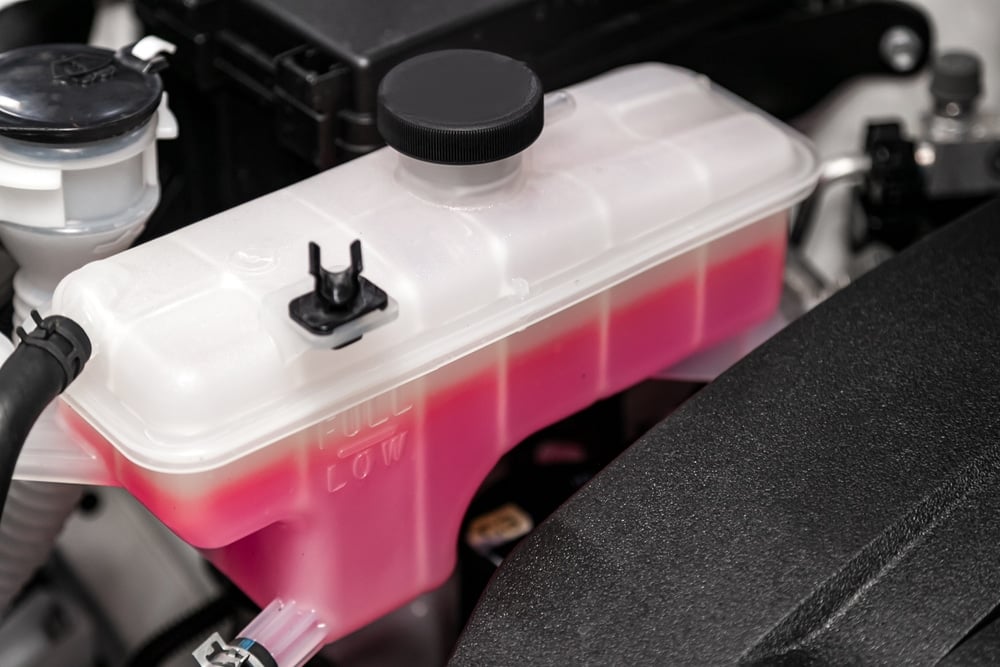
The next step is just as easy to do. Take a look at the coolant level and top it off if needed. Here are the steps you want to follow.
- Only check the coolant when the engine is cool.
- Look on the side of the coolant reservoir. There may be markings on the plastic showing you the levels.
- If the coolant reaches the “Full” mark, you don’t have to do anything else.
- If it is below this mark, carefully remove the radiator cap.
- Add just enough of the coolant to top it off.
Make sure you use the right coolant type and mixture for your vehicle or you could cause major damage.
3. Flush and Bleed Coolant System
To get any air out of the cooling system, you need to bleed it.
- Take off the radiator cap after the engine is cool.
- Insert a funnel into the radiator.
- Fill the radiator up with as much coolant as you can. Make sure you use the right kind.
- Once the coolant is stable and not moving, start the vehicle.
- Turn on the heat to its hottest setting and the fan on low.
- As the coolant levels drop, top off the system again.
- Confirm that there is heat coming from the cabin vents.
- Watch the temperature gauge to ensure the engine doesn’t overheat.
- Once the radiator is completely topped off and not going down anymore, shut off the engine and put the cap back on.
- Drive the vehicle to ensure the car doesn’t overheat.
- Once the system is cooled back down, confirm that there’s still enough coolant. Top off if needed.
If it was time for a coolant change anyway, you could also flush the system. This requires you to drain out the old fluid and refill it.
LEARN MORE: How to Properly Bleed Your Cars Cooling System by Yourself
4. Measure The Coolant Temperature Sensor
With a multimeter, you can test the coolant temperature sensor. The sensor is usually located next to the thermostat.
It’s best to reference your factory service manual when checking these readings. If you get anything other than what’s recommended by the manufacturer, you may choose to replace the sensor.
5. Diagnose Thermostat and Coolant Flow
Start the vehicle and let it idle. Look through the radiator filler neck to see if there’s any coolant flowing. You shouldn’t see anything flowing at first because the engine hasn’t reached its operating temperature. If it is flowing, the thermostat valve is stuck open.
If it’s not flowing, continue letting the engine run until it reaches optimal temperature. Look through the radiator filler neck again and the coolant should be flowing. If not, the thermostat is in a stuck closed position and the temperature will continue to rise.
6. Contact A Professional
Working with the car’s cooling system is no easy task. Even with all of the experience we have, we still find some aspects of it to be complicated and confusing.
If you are unsure what to do or you would rather not deal with the repair yourself, talk to your local auto technician. Sometimes, it’s best to trust the professionals, especially since an overheated engine can lead to massive repair bills.
Why is my car running hot all of a sudden?
A mechanical failure might have occurred. Check the thermostat, radiator, coolant temperature sensor, water pump and temperature gauge. It could also be low coolant or air in the system. Otherwise, you might simply be overloading your car engine and expecting too much from it.
How do I know if my thermostat is stuck open?
If the thermostat is stuck open, you will see coolant flowing past the radiator fill neck even before the engine reaches its operating temperature. The engine probably won’t reach that temperature easily because of the flowing coolant. You probably won’t get any heat from the vents, either.
Why is my temperature gauge fluctuating but not overheating?
It’s possible that the temperature gauge is broken. Otherwise, it could be due to a bad thermostat, radiator, coolant temperature sensor or water pump. If not, consider that there’s air in the system, too little coolant or you have pushed the engine too hard.
Why does my car run hot and then go back to normal?
It’s possible that you are pushing the car beyond what it’s capable of or there’s not enough coolant. You may also have air in the cooling system or be facing a mechanical failure, such as a bad thermostat, radiator, coolant temperature sensor, water pump or temperature gauge.
It’s important to keep a close eye on the temperature gauge of your car, but not everyone does. By recognizing trouble with the operating temperature early on, you have a better chance of preventing a problem. As you watch the temperature gauge, you will have become more accustomed to what it should look like, so you can tell when something’s abnormal.
If you aren’t sure what you are looking at, there’s no harm in getting a second opinion. When your engine overheats, it can cause serious damage. If you need to have the engine replaced, you are looking at thousands of dollars. For that reason alone, all temperature issues should be taken seriously if you want to avoid these costly repairs.
Categories: Coolant, Troubleshooting
